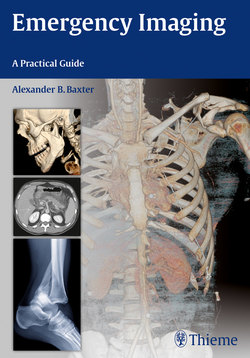Читать книгу Emergency Imaging - Alexander B. Baxter - Страница 79
На сайте Литреса книга снята с продажи.
Оглавление65
2Brain
without evidence of infection elsewhere should suggest the possibility of pulmo-nary arteriovenous shunting, which can be seen in hereditary hemorrhagic telangiec-tasia (Osler-Weber-Rendu syndrome).
On noncontrast CT, a brain abscess ap-pears as an area of indistinct low attenu-ation with variable surrounding vasogenic edema. The dierential diagnosis includes atypical infections such as toxoplasmosis, cysticercosis, primary or metastatic neo-plasm, subacute infarct or contusion, and demyelinating disease. Postcontrast CT and MRI show characteristic uniform pe-ripheral enhancement. Diusion-weighted MRI permits distinction from primary brain tumors; pus within a brain abscess shows very high diusion-weighted signal, whereas brain tumors are typically hypoin-tense. Established abscesses may also show adjacent “daughter” lesions (Fig. 2.27).
◆Cerebritis and Brain Abscess
When an area of focal cerebritis organiz-es into a pus-filled cavity surrounded by granulation tissue and a fibrous capsule, it is termed a brain abscess. Patients do not typically appear acutely toxic and often present with nonspecific symptoms such as headache, fever, vomiting, confusion, or obtundation. Meningeal or focal neurologic findings (hemiparesis, seizures, or papill-edema) are present in fewer than half of patients.
Brain abscesses are caused by several mechanisms, including direct extension of a skull base or deep facial infection (otitis media, mastoiditis, or sinusitis), hematog-enous seeding (endocarditis, pulmonary arteriovenous shunt), or direct inoculation following open skull fracture or cranioto-my. In at least 15% of cases, no source of infection is identified. Discovery of a brain abscess in an immunocompetent patient
Fig. 2.27a–fa,b Brain abscess, gram-positive cocci. (a) Postcontrast CT shows a solitary, well-dened, low-attenu-ation mass with thin enhancing rimcentered in the left thalamus. (b) Low-signal-intensity mass on T1-weighted postgadolinium images shows thin, well-dened, enhancing rim. Minimal adjacent low-signal white matter change corresponds to vasogenic edema.
c–f Brain abscess. (c,d) Pre- and postcontrast CT shows a bilobed, peripherally enhancing mass in the left parietal lobe and a smaller area of vasogenic edema in the right parietal white matter. (e,f) Diusion-weighted MRI shows typical high signal within the center of the abscess. FLAIR images show the larger left parietal abscess and smaller right parietal focal area of vasogenic edema.
